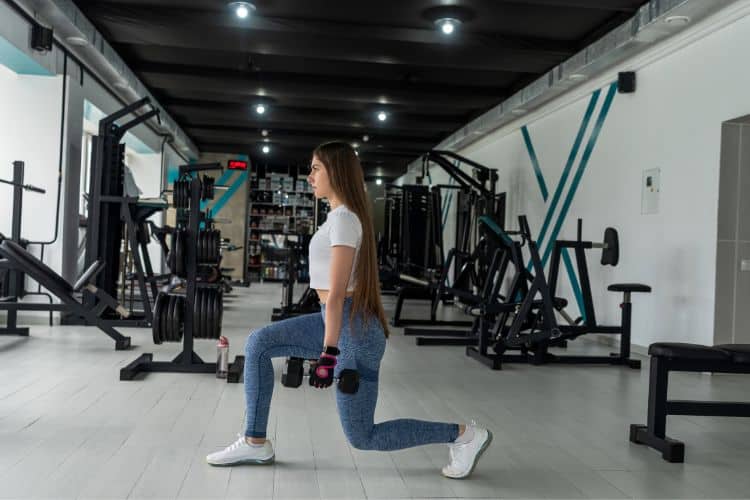Sign up for workout ideas, training advice, reviews of the latest gear and more.






The dumbbell chest press is one of the most effective upper body exercises you can do to build strength, power, and size in your chest muscles. Whether you’re working out at home or in the gym, this versatile movement targets your pectorals, triceps, and anterior deltoids, making it a staple in any chest day workout. In this blog post, we’ll dive deep into the benefits of the dumbbell chest press, how to perform it correctly, common variations, and tips to maximize your results.
The dumbbell chest press is a compound resistance exercise that primarily targets the pectoralis major. Unlike the barbell bench press, using dumbbells allows for a greater range of motion and independent arm movement, which engages stabilizing muscles and helps correct muscle imbalances.
This makes the DCP an excellent option not only for chest development but also for enhancing functional upper body strength.
Incorporating the DCP into your strength training routine offers several key benefits:
Studies have shown that dumbbells allow for greater muscle activation in the chest compared to a barbell. This is because each side of the body has to work independently to press the weight, minimizing the risk of muscle compensation and imbalance.
Dumbbells enable a deeper stretch at the bottom of the press, helping to engage the chest muscles more fully and increasing the hypertrophic (muscle-building) effect.
Because you’re controlling two separate weights, your core and smaller stabilizer muscles must engage to keep your body steady and balanced throughout the movement.
When performed with proper form, the dumbbell chest press is easier on the shoulder joints than the barbell bench press. The natural path of motion with dumbbells allows the wrists and elbows to move more freely, reducing strain.
Proper form is essential to avoid injury and get the most out of your dumbbell chest press. Here’s a step-by-step guide:
Adding variation to your chest workouts can target different parts of the pectoral muscles and help break through plateaus.
Purpose: Targets the upper chest
Setup: Adjust the bench to a 30-45 degree incline
Tip: Keep your core tight to avoid arching your back excessively
Purpose: Focuses more on the lower chest
Setup: Set the bench at a slight decline angle
Tip: Secure your legs under the bench to maintain stability
Purpose: Enhances core activation and corrects muscle imbalances
Setup: Press one dumbbell at a time while keeping the opposite arm extended or resting
Tip: Go lighter on the weight to maintain proper control
Purpose: Ideal for home workouts and protects the shoulders
Setup: Lie flat on the floor and perform the same pressing motion
Tip: Use a slow tempo for maximum tension
Depending on your training split, here’s how you can integrate the DCP:
Day 1 (Upper Body)
Day 1 (Push)
Day 1 (Full Body)
Always warm up with light cardio and shoulder mobility drills before lifting. Perform a couple of warm-up sets with light dumbbells to prepare your muscles and joints.
Consciously squeeze your chest muscles during each rep. This helps maximize engagement and growth, especially during the concentric (pushing) phase.
Don’t rush your reps. A controlled tempo like 2 seconds down, 1-second pause, and 1 second up can help increase time under tension.
To build strength and muscle, gradually increase the dumbbell weight over time. Track your reps and weights to ensure consistent progress.
Allow at least 48 hours between chest workouts. Proper recovery with sleep, hydration, and protein intake is essential for muscle growth.
While both exercises target the chest, there are key differences:
| Dumbbell Chest Press | Barbell Bench Press |
|---|---|
| Greater range of motion | Easier to lift heavier weight |
| Activates stabilizer muscles | More stable and structured movement |
| Corrects muscle imbalances | Ideal for maximum strength building |
| Less strain on shoulders | More stress on joints if done wrong |
Conclusion: If you’re working on muscular symmetry, range of motion, and shoulder safety, the dumbbell chest press is often a better option for most people, especially beginners and intermediate lifters.
Yes! It’s easier to learn proper form with dumbbells, and the movement feels more natural. Beginners can start with light weights and gradually increase resistance.
Absolutely. The floor dumbbell press is a great alternative that reduces shoulder strain and still targets the chest effectively.
Choose a weight that challenges you but still allows you to complete all your reps with good form. If you’re aiming for 10 reps, you should be struggling by rep 8 or 9.
1–2 times per week is ideal, depending on your program. Be sure to allow adequate recovery between sessions.
The dumbbell chest press is a versatile, powerful exercise for building chest size, strength, and muscular balance. Whether you’re training at home or in a gym, this movement should be a cornerstone of your upper body routine. With its ability to enhance range of motion, improve muscle symmetry, and reduce injury risk, it’s one of the best alternatives to the traditional barbell bench press.
Stay consistent, focus on form, and progressively increase the challenge—and you’ll see noticeable gains in both strength and physique. Whether you’re just starting out or you’re an experienced lifter, the dumbbell chest press can take your chest development to the next level.
Want more effective workouts?
Subscribe to our blog or follow us on Pinterest for new routines, challenges, and fitness tips!
Stay up to date on the latest women’s health, fitness and lifestyle trends and tips.